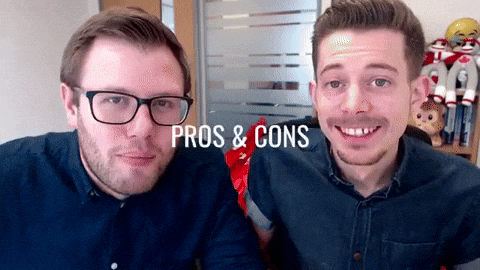- Affiliate Programs
- Affiliate Networks
- Ad Networks
- Articles
- Tools
- Social Media Accounts
- Events
- 💵 Cards from $2
New marketing terms appear almost daily; hence, beginners might stumble upon some of them while studying details of an affiliate offer or reading interviews and texts. Some marketers even stated that businesses sometimes might lose through their advertising campaigns if they are unaware of the difference between "incentive" and "non-incentive" traffic. So, below you will find out what non-incentive traffic is, as well as its advantages and disadvantages.

Non-incentive (aka non-incent and non-incentivized) traffic represents a traffic generating strategy that lures users to make a required action without offering them any reward. This traffic type is generated when there are no bonuses (or incentives) to users from advertisers. In other words, the traffic is generated only when interested potential customers react to an ad.
This strategy requires that an advertiser has to motivate potential users and demonstrate that the advertised product is relevant to them. Naturally, the cost per acquisition is higher compared to incentive ad campaigns. But the strategy pays off in the long run. Let’s see how it works.

So many of us have pets. Now, while browsing you notice an ad for pet accessories. The ad links to an app. When you are already interested in providing your pet with high-quality accessories, you download and install the app without any bonus from an advertiser. You install the app just because you want to keep your pet healthy and happy and provide it with high-quality goods.
If you are satisfied with the quality and price, you’ll check the app again and again for new product updates. You read customer reviews and leave feedback voluntarily. So, the company receives a long-time-value customer, high engagement rate, and higher ROI.
Now that you have an idea of what non-incentive traffic is, let’s list the major pros and cons of implementing this type of ad strategy.
Pros:

Cons:
To illustrate the potentials of non-incentive traffic, give a look at a case study: ROI 144% on PopUnder traffic on Tier 2. The offer was short-term tested before launching a large-scale campaign.

Traffic type: PopUnder
Offer: Mainstream Antivirus
Period: March 01-07, 2021
GEO: Brazil
Expenses: $74.79
Income: $182.82
Profit: $108.03
ROI: 144%
The advertiser required non-incentive traffic with Android targeting. Payment per install was $0.22. PopUnder traffic is known for tons of junk, so the marketer has to work out the way to filter bots and set his own budget to make the campaign profitable. He decided to drive traffic at $0.09 per install.
For the antivirus offer the marketer decided to go with prelanders "with embedded alerts and sound effects".

The landing page looked as follows:

Results you can see below:

And the screenshot from the affiliate program:

The marketer also noted that he got satisfied with the results and planned to continue working with the affiliate offer.
Conclusion
As you have learned, non-incentive traffic has pros and cons that should be taken into account while planning an ad campaign. The most efficient strategy may include both incentive and non-incentive traffic to ensure high-quality traffic in the long term.